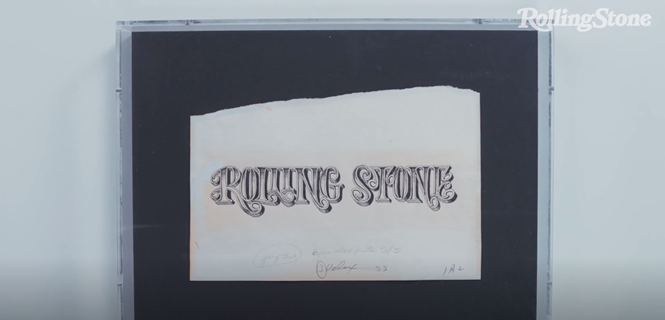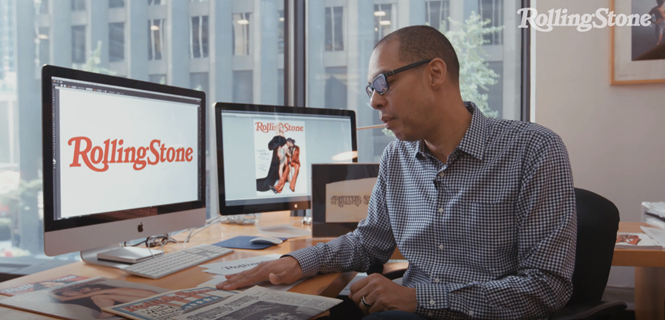Rolling Stone magazine rolls out refreshing rebrand
The cult classic American monthly magazine that focuses on pop culture has been a staple in the world’s culture since 1967, when, established by Jann Wenner and based in San Francisco, it became well known for its musical coverage and for political reporting by Hunter S. Thompson.
Now, Rolling Stone has undergone both a digital and a hard copy makeover, changing considerably its logo and website in an effort to meet the demands of the new generation of readers. Starting with the new issue, featuring rappers Cardi B and Offset on the cover, the magazine sports a new, bold and glossy look, heavy in quality imagery and with its number of pages significantly increased.
Rolling Stone’s president, Gus Wenner, son of Rolling Stone founder and editorial director Jann Wenner, says, “As Rolling Stone evolves its worldview, our founding mission remains the same – to make outstanding content that prioritises quality storytelling. Excellence remains core to all we do; we have revamped our products across digital and print to best showcase and monetise this exceptional quality, including a more robust live events business as an extension of our editorial mission and voice.”
Rolling Stone’s previous logo read a bit outdated, making its change necessary. However, since it has always been a focal part of the magazine branding, Rolling Stones was careful not to tweak it too much and the magazine’s loyal fans. Going back to its roots, Rolling Stone approached the designer of the magazine’s very first logo, Jim Parkinson, who came up with a logo that is distinctively modernised, loosing the iconic shadow of the letters and therefore its 3D quality, while at the same time remains immediately recognisable.
Parkinson says, “It wasn’t about modernising. It was about simplifying. Correcting. The previous logo was like an over-decorated Christmas tree. Once all the ornamentation was stripped away, the lettering just fell apart. Through decades and three generations of the logo, the lettering was never considered without a shadow…and sometimes the lettering was compromised for the sake of the shadow. It was easier for me to just re-letter it while repairing everything that wasn’t working”
“I got rid of the 3D effect because they told me to. The R you mention was just one of many we considered. If the left vertical stroke of the R stops at the baseline of the lower case, then the swash tail of the R dwarfs the rest of the letter, and if you remove the swash tail, you are left with nothing…except to start over…but the idea was to try and not completely lose touch with the previous logos. Drawing letters is like drawing anything else, as I work I’m making tons of decisions on the fly and the next day I can’t break a piece of lettering down into millions of tiny, split-second decisions and list off the pros and cons I weigh in a particular nanosecond. It’s just a drawing. I worked with Joe Hutchinson. Sketches. Suggestions. More sketches. More suggestions. Like a couple of kittens batting a ball of yarn back and forth. Then, all of a sudden, seemingly out of nowhere, it is done,” Parkinson continues.
The magazine has also enhanced its content, providing readers with even more of what made it famous in the first place; more new music, more political coverage, more of current affairs in pop culture.
The Rolling Stone’s website has been redesigned to offer easier navigation to its visitors and a better on-screen translation in mobile devices. The content of the website has also been enriched with original videos, reviews, lists, commentary, and in-depth features.
To support both the website’s and the magazine’s makeover, Rolling Stone expanded its staff with important hires in its editorial team and its core areas of music, politics and pop culture.
Jason Fine, editor of Rolling Stone, says, “Rolling Stone is poised to break more news, launch deeper investigations, and produce the kind of unique, reported narrative journalism and rich profiles we are most known for. We are evolving what we cover and how we cover it, without losing our core focus and commitment to quality journalism.”
The rebrand follows the investment made earlier this year by American digital media, publishing, and information services company Penske Media Corp. Jay Penske, CEO of Penske Media, says, “The Rolling Stone business has a unique balance of mission and impact, not to mention some of the most talented content creators and investigative journalists. There is so much opportunity ahead for this incredible business and brand; the relaunch is just the beginning.”
For more from Transform magazine, follow us on Twitter @Transformsays.
















